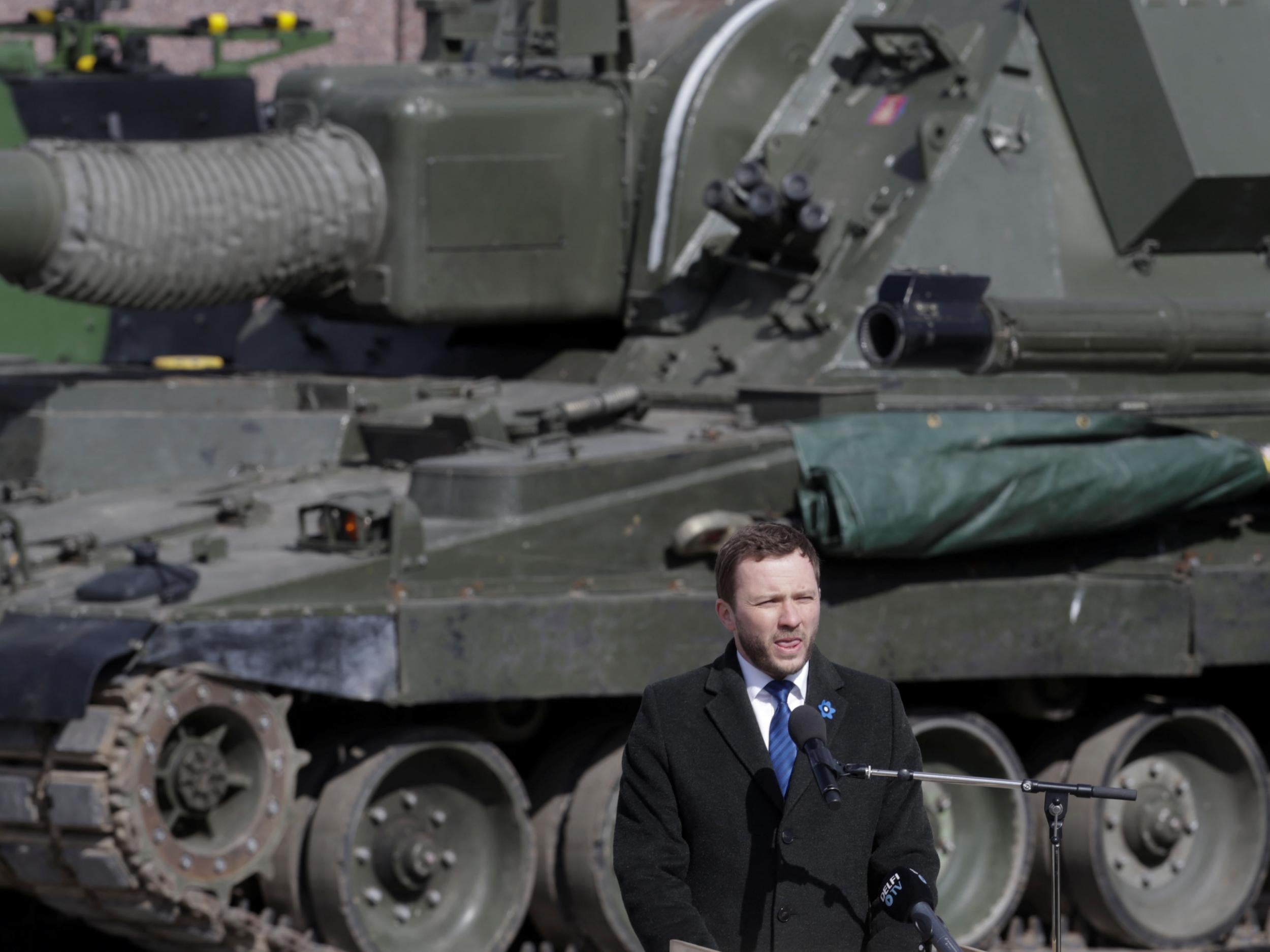Russia may station troops in Belarus to challenge Nato, warns Estonia
Defence Minister Margus Tsahkna raises concerns Kremlin will use large-scale military exercises in region as pretext to plant soldiers abroad

Your support helps us to tell the story
From reproductive rights to climate change to Big Tech, The Independent is on the ground when the story is developing. Whether it's investigating the financials of Elon Musk's pro-Trump PAC or producing our latest documentary, 'The A Word', which shines a light on the American women fighting for reproductive rights, we know how important it is to parse out the facts from the messaging.
At such a critical moment in US history, we need reporters on the ground. Your donation allows us to keep sending journalists to speak to both sides of the story.
The Independent is trusted by Americans across the entire political spectrum. And unlike many other quality news outlets, we choose not to lock Americans out of our reporting and analysis with paywalls. We believe quality journalism should be available to everyone, paid for by those who can afford it.
Your support makes all the difference.Estonia's defence minister has said that Russia may use large-scale military exercises to move thousands of troops permanently into Belarus later this year in a warning to Nato.
Russia and Belarus aim to hold joint war games in September that some North Atlantic Treaty Organisation allies believe could number more than 100,000 troops and involve nuclear weapons training, the biggest such exercise since 2013.
Defence Minister Margus Tsahkna said Estonia and other Nato governments had intelligence suggesting Moscow may leave Russian soldiers in Belarus once the so-called Zapad 2017 exercises are over, also pointing to public data of Russian railway traffic to Belarus.
Tsahkna cited plans to send 4,000 railway carriages to Belarus to transport Russian troops and gear there, possibly to set up a military outpost in its closest ally.
“For Russian troops going to Belarus, it is a one-way ticket,” Tsahkna told Reuters in an interview in Malta.
“This is not my personal opinion, we are analysing very deeply how Russia is preparing for the Zapad exercises,” he said before a meeting of EU defence ministers.
Russiaâs Defence Ministry did not immediately reply to a Reuters request for comment on the subject.
Moscow denies any plans to threaten Nato and says it is the US-led alliance that is risking stability in eastern Europe. The Kremlin has not said how many troops will take part in Zapad 2017.
“We see what they are doing on the other side of the EU-Nato border. Troops may remain there after Zapad,” Tsahkna said, saying that Tallinn had shared its concerns with Baltic and Nato allies. He put the number of potential troops in the thousands.
Such a move could see Russian troops on the border with Poland, Lithuania and Latvia just as the US-led Nato alliance stations multinational battalions in the Baltic region in response to Russia's 2014 annexation of Ukraine's Crimea.
The scale of this year's Zapad exercises, which date from Soviet times when they were first used to test new weapon systems, is one of Nato's most pressing concerns, as diplomats say the war games are no simple military drill.
Previous large-scale exercises in 2013 employed special forces training, longer-range missiles and unmanned aerial vehicles that were later used in Russia's annexation of Crimea, its support for separatists in eastern Ukraine and in its intervention in Syria, Nato diplomats said.
Russia, bridling at Nato's expansion eastwards into its old Soviet sphere of influence, says its exercises are a response to Nato's 4,000-strong new deterrent force in the Baltics and Poland that will begin to rotate through the region from June.
Russian Defence Minister Sergei Shoigu said in January the scenario for the Zapad 2017 exercises would “take into account the situation linked to increased Nato activity along the borders of the Union state,” Russian media cited, in a reference to the union of Russia and Belarus.
The exercises, to be held simultaneously on military training grounds in Russia and Belarus, aim to focus on joint planning, command tactics and joint troop formations, he said.
“In the future we plan to strengthen the practical nature of such exercises, taking into account the emerging foreign policy realities,” Shoigu added, in an apparent reference to the expansion of Nato, which is soon to include Montenegro.
The US Army's top European commander has called on Russia to open its exercises to observers to calm Baltic concerns.
Asked about Moscow's possible motives for leaving troops in Belarus, Tsahkna said it was likely about President Vladimir Putin's image as a strong leader at home, as well as cementing ties with Belarus, which was alarmed by the Crimea annexation.
“Russia has presidential elections next year and Putin needs to show strength to the Russian people,” Tsahkna said. “It's also a question of trust with Belarus.”
The West has sought to improve ties with Belarus over the past two years, lifting some sanctions in an overture to the country's President Alexander Lukashenko, the man the West calls Europe's “last dictator.”
But Belarus remains Russia's ally and a member of Putin's Eurasian trade bloc. Belarus Defence Minister Andrei Ravkov has echoed Russia's position that Nato is a threat, also accusing Ukraine of raising tensions by aligning itself with the West.
Copyright Reuters
Join our commenting forum
Join thought-provoking conversations, follow other Independent readers and see their replies
Comments